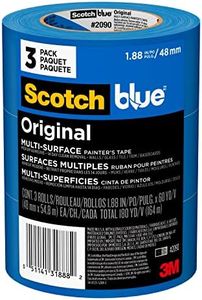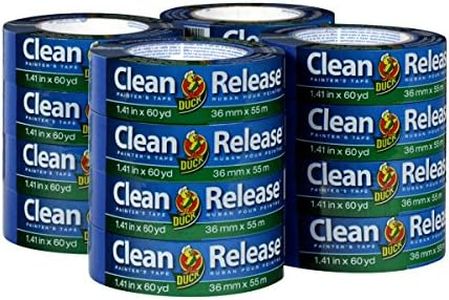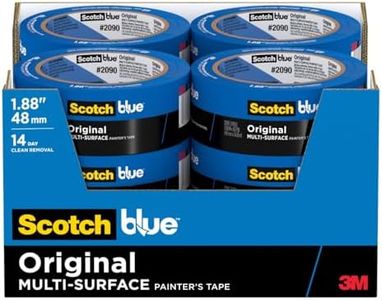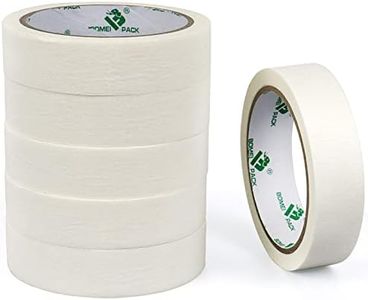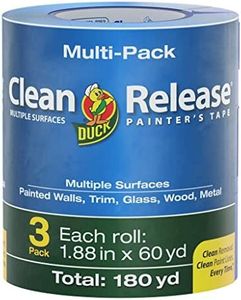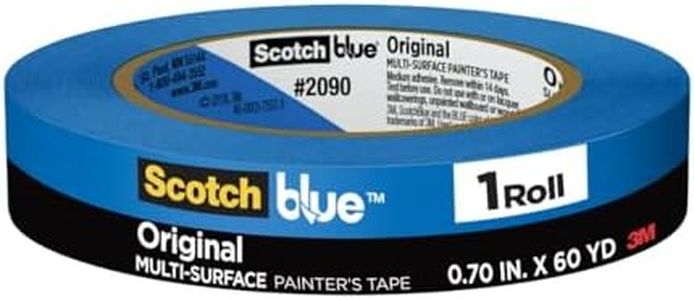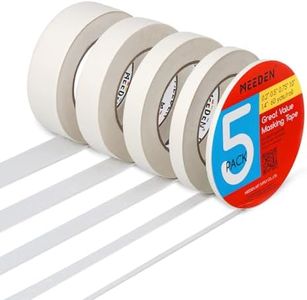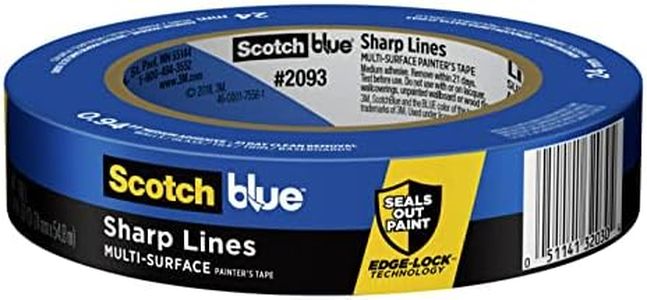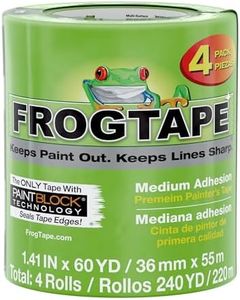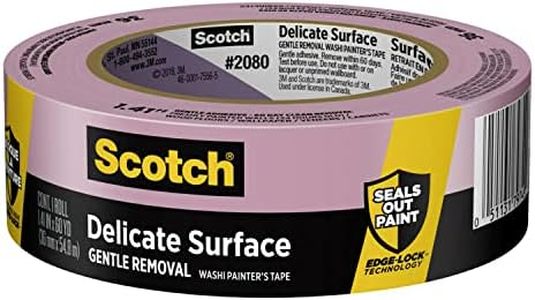We Use CookiesWe use cookies to enhance the security, performance,
functionality and for analytical and promotional activities. By continuing to browse this site you
are agreeing to our privacy policy
10 Best Painters Tape
From leading brands and best sellers available on the web.Buying Guide for the Best Painters Tape
Choosing the right painter’s tape is key for anyone doing painting projects, whether you’re touching up a room, creating clean lines for wall designs, or protecting edges and surfaces from stray paint. Painter’s tape helps you get that professional-looking finish by keeping paint only where you want it. When picking the best painter’s tape for your job, think about the surface you’ll be painting on, how long you’ll need the tape to stay up, and the kind of paint you’re using. Understanding a few main specifications will help you get perfect lines without damaging surfaces.Adhesion StrengthAdhesion strength refers to how sticky the tape is when applied to a surface. This is important because too strong a tape can pull off paint or damage delicate surfaces, while tape that isn’t sticky enough may not hold and allow paint seepage underneath. Adhesion strength is often divided into low, medium, or high categories. Low adhesion is best for freshly painted walls, wallpaper, or delicate surfaces. Medium is suitable for cured paint and woodwork. High adhesion is for rough surfaces like brick or concrete. Think about what you'll be taping—choose lower adhesion for sensitive areas and stronger adhesion if you need the tape to stick well to textured or outdoor surfaces.
Edge Sharpness (Clean Removal)Edge sharpness is the tape’s ability to stop paint from bleeding underneath so you get a crisp line. This is really important for decorative stripes or when painting next to trim. Tapes advertised as 'sharp line' or 'clean edge' are specially designed for this. Some tapes even have an extra layer for crisp lines. If you want flawless results, especially with lighter colors or clean accents, look for tapes that stress clean edge technology. If you’re doing basic coverage or touch-up jobs, standard tape will work fine.
Surface CompatibilitySurface compatibility means the kinds of surfaces the tape can be used on without causing damage or failing to stick. Painter’s tape can be designed for walls, wood, glass, metal, and even roughness like brick or stucco. Compatibility matters because using the wrong tape can lead to peeling paint or residue left behind. If you’re working indoors on smooth walls, go for tapes marked for interiors or delicate surfaces. For outdoor or rough projects, look for tapes specifically labeled for those surfaces.
Removal Time (Residue-Free Period)Removal time is how long you can leave the tape on a surface before it becomes hard to remove or leaves sticky residue. This is usually measured in days and can range from a few hours to several weeks. Shorter removal times (like 1 day) work if you’re doing quick jobs, while longer times (up to 14 or 21 days) are helpful if your project takes longer or if you want to prep in advance. Choose longer removal times if you need flexibility or might not finish painting right away; just remember that leaving any tape on too long can eventually cause sticky residue.
Tape WidthTape width is how thick the tape is from edge to edge. This matters because wider tape gives you more area to protect but can be harder to use in tight or detailed spots. Standard widths range from about 0.7 inches to 2 inches. Narrow widths are good for detail work or thin stripes, and wider tapes are better for protecting trim, baseboards, or large surface edges. Think about what you’re taping—select narrow tape for curves or precision, and wide tape for broad, straight areas.
